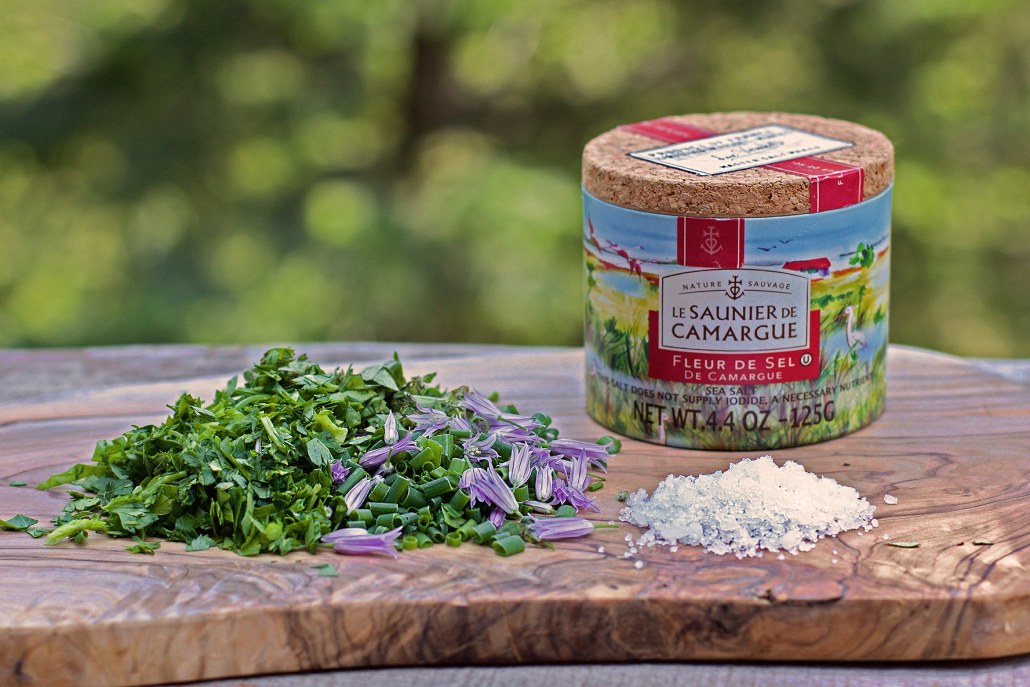
Make Your Own Herb Salt
For years, we’ve heard about the importance of getting a variety of vitamins and minerals in our foods – so much so that billions of dollars of vitamin and mineral supplements are sold each year.
But in our rush to identify valuable nutrients, we overlooked something important: phytonutrients!
In this herb salt recipe, we are going to use three herbs that are exceptionally high in phytonutrients.
What are phytonutrients?
Phytonutrients are a range of beneficial chemicals found within plants. (You’ve probably heard of some of these before, like quercetin and resveratrol.)
Plants create phytonutrients to help them to grow or to fight off predators and it turns out that many plant chemicals (sometimes called secondary metabolites) help us, too!
Going far back into history, your ancestors probably ate a lot more phytonutrients than you do. That’s because today we generally consume a limited amount of fruits and vegetables, not just in the quantity but also in regard to the diversity.
If you wrote down a list of all the different kinds of fruits and veggies you ate within a year, how many different types do you think would be on that list? 10? 20? 30?
Some hunter-gatherer peoples ate an estimated 800 different types of plants throughout a given year! (Although, of course, some in northern climates ate fewer types of plants.)
In recent years, phytonutrients have especially caught our attention because of their ability to modulate chronic inflammation. Chronic systemic inflammation is a major underlying cause of many of our modern diseases, such as type 2 diabetes and heart disease.
As we compare our modern-day consumption of phytonutrients to our ancestors’, and as our understanding of phytonutrients grows, more and more researchers and nutritionists are wondering: is our lack of phytonutrients causing some of our modern-day health imbalances?
How many phytonutrients should you eat?
When it comes to getting an optimal amount of phytonutrients in your diet, it’s a bit different from how we think of vitamins and minerals.
For vitamins and minerals, there is a daily recommended amount. If you get too little of a vitamin or mineral, then you may see negative consequences.
When thinking about general health, with phytonutrients what seems to be important isn’t necessarily a set amount of something but an evolving diversity of different sources. In many cases, it’s not about how MUCH of one particular thing but rather how many types. In other words, a little can go a long way!
What’s the best source of phytonutrients?
Phytonutrients are found in fruits, vegetables, and, you guessed it, herbs.
In fact, herbs are some of our richest sources of phytonutrients and enjoying them in your daily diet is a delicious way to get a variety of those benefits. Consuming phytonutrients through herbs and spices is far superior to taking a supplement.1 That’s because isolated extracts haven’t been shown to have the same benefits. This is where whole plant medicine really shines!
The three herbs in our herb salt blend are especially high in phytonutrients.
Parsley (Petroselinum crispum)
Often dismissed as a garnish, parsley is an abundant source of phytochemicals and is a powerful antioxidant!2 One flavonoid, apigenin, has been frequently studied for its effects against cancer and as an antioxidant.
You commonly see two types of parsley being sold at the store. One is the curly-leaf parsley and one is the Italian or flat-leaf parsley. Flat-leaf parsley has a much more vibrant taste and is often preferred as a richer source of nutrients. You can, however, use either kind of parsley for this recipe.
Chives (Allium schoenoprasum)
Now commonly grown in gardens, chives are a native plant in North America and Europe. These plants are very easy to grow, and in the springtime, their prolific purple flowers attract many pollinators. Both the flowers and leaves are edible and they have a mildly spicy and fresh taste.
The allium, or onion, family is well known for its health benefits. Phytonutrients within alliums have been widely studied for their benefits on the heart.34
It turns out that chives and their close cousins, green onions, have a lot more phytonutrients than bulb onions! Since I learned that, I’ve been adding lots of fresh chives and chopped scallions to our meals year-round.
Oregano (Origanum vulgare)
Oregano is exceptionally high in flavonoids and phenols, many of which have been shown to have antioxidant and inflammatory modulating potential.5 In studies, oregano is often shown to have one of the highest amounts of antioxidants.
What about the salt?
Salt comes in many different types, ranging from your average table salt to exotic salts from faraway places.
When choosing salt, one of the most important considerations is how it is shaped. Small, granular salt is great for adding to food during the cooking process. Large, flaked salt melts on the tongue in a dispersive way, making it a better choice for adding to meals after they are cooked (it is often referred to as a finishing salt). Look for flaky salt like Maldon or fleur de sel for this herb salt recipe.
Fresh Herb Salt Recipe
Preserve the vibrant taste of fresh herbs in this seasoning salt. Parsley, chives, and oregano are a delicious combination of savory, spicy, and aromatic herbs that will enliven your foods. Using flaky salt, such as Maldon or fleur de sel, makes this a wonderful finishing salt. Keep it on your dinner table and use often!
What you’ll need…
- 1/2 cup finely chopped fresh parsley leaves
- 1/4 cup finely chopped fresh chives and flowers
- 1/4 cup finely chopped fresh oregano leaves
- 1/2 cup flaky salt
- Combine all the herbs and salt together.
- Spread the mixture onto a parchment paper-lined baking pan and keep it out of direct sunlight. Stir once a day to aerate and break up clumps.
- After the herbs have dried (roughly 36 to 48 hours), store the herb salt in a tightly sealed container and use within 1 month.
- Sprinkle as desired as a finishing salt on veggies and meats.
Yield: About 1 cup
Now I’d love to hear from you!
Do you get a lot of phytonutrients in your life?
Do you think using herb salt would be a hit with your friends and family?
Let us know in the comments below.

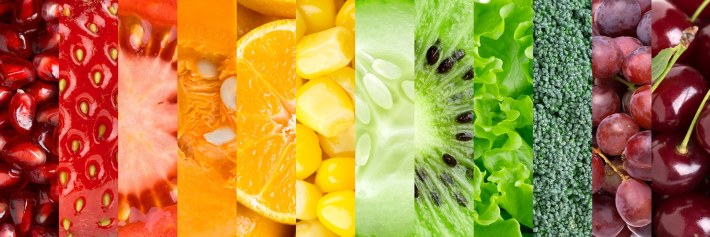
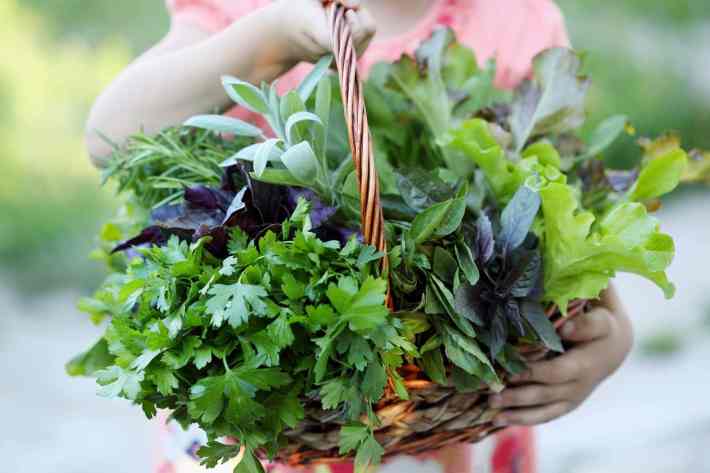
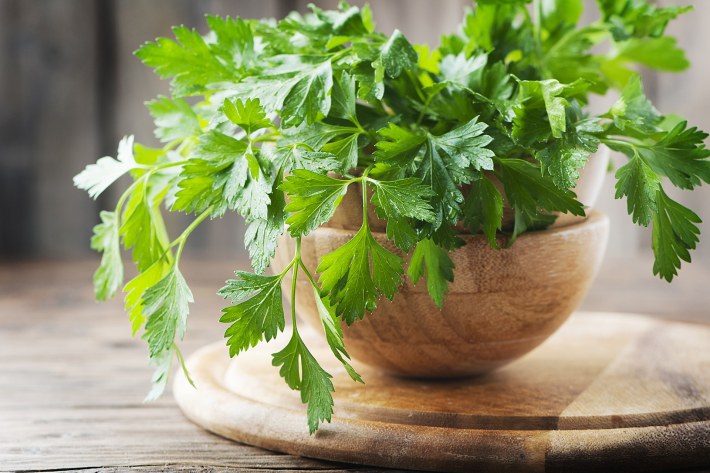
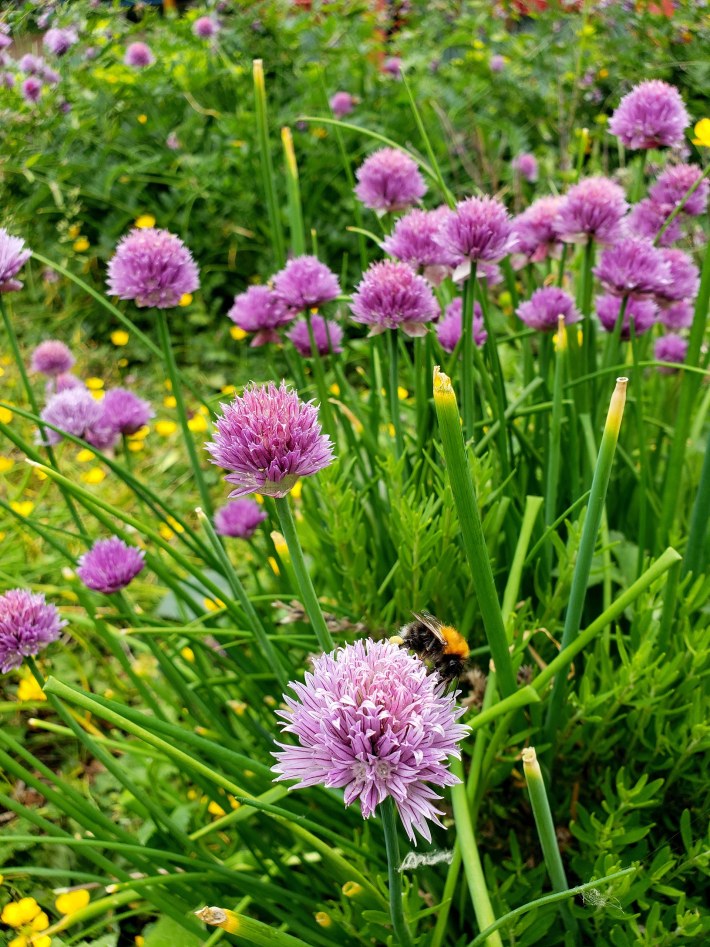


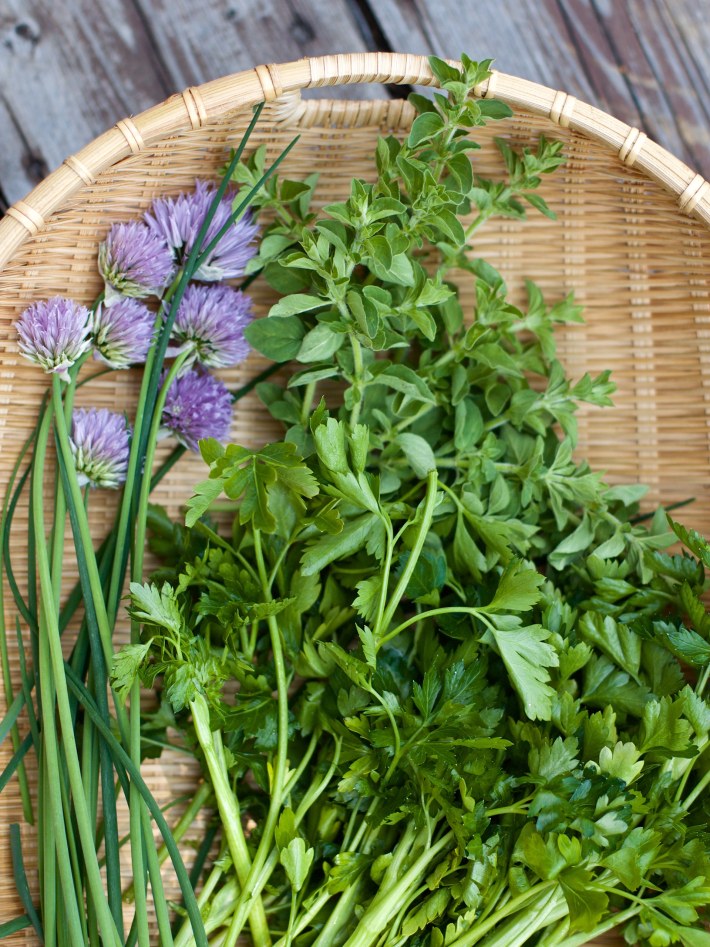
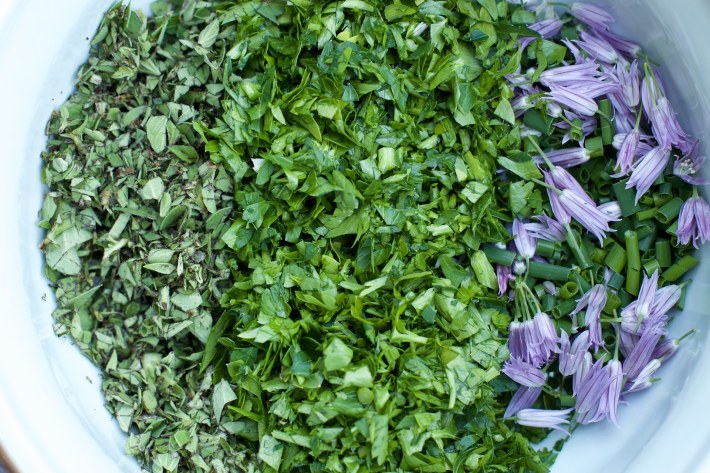

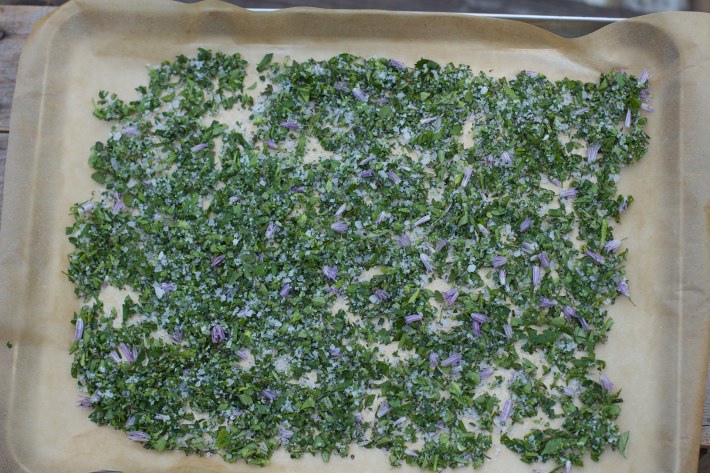










Hi Rosalee, thanks for this recipe! I have grown up with chives and I really dislike them. I guess there wouldn’t be a nice, closely matching equivalent that I could use?
Hello Anita, you might wish to use green onions or thyme or any other herbs you prefer. This recipe is a springboard for other herbed salt creations. Enjoy!
Rosalee and John, your resources are so wonderful! I loved reading about phytonutrients and knowing I can make Herb Salt so easily. It sounds delicious. I also love how very fresh and beautiful your site and books are. Such a pleasure to use, every time. I just completed a survey for the National Science Foundation about their proposal management system, which is about as clear as the tax code, and just as unappealing. Turning to your site next and reading clear, inspiring, beautifully laid out directions for making something so healthy and delicious was a pleasure. Thank you so very much!
Thank you for your kind words, Ann!
Love the recipes! thank you and Many Blessings! Caite
I use fresh herbs in my salad every day. Will that give me the same benefits as the herb salt?
The more you layer in the daily use of herbs, the better your health. The fresh herbs in your salad are awesome! The herb salt is also great. Herbal teas are good, too. Enjoy!
Thank you for this! I bought herb salt once locally and went through the bottle and never saw the lady again. I have fresh herbs in my garden so I’m glad I’ll be able to make it myself.
This season I started growing 2 herbs indoor; sage and basil. Rosalee, I am thinking that these herbs are good combination for salting sauces after cooking using your recipe. Do sage and basil pair harmoniously for herb salt? Thank you for the herb salt recipe!
Try them together and see if you enjoy them that way. You could always make a single herb salt, if that appeals to you most. Enjoy!
Hi Rosalee,
I’m planning to make herb salts for teacher gifts. May I chop the herbs in my food processor or is there a reason to chop by hand?
Thank you
You can certainly try it in your food processor. I have found our food processor tends to create a bit more of a slurry than just chopped herbs. Ours is a very basic processor, though, so yours may do a better job. There is a certain pleasure with getting the herbs directly in contact with your hands and hand-chopping, but I understand the volume issue when creating gifts.
Good day to you, Jacqueline.
I’m Sherry and I’m a Culinary person. We prefer to chop fresh herbs by hand with a very sharp knife. . Reason being is that it doesn’t bruise the herbs, which can cause browning of them. The end product looks better, more definite, so to speak. I hope this helps you out. happy blending! ;)
Thank you soo much Rosalee & Learning Herbs, I’m excited about this new journey I’m at the beginning of, doing courses, getting these wonderful additions & ditto to previous comments about the website & videos being so clear & easy to follow, what draws me in the most is when I hear your passion, as above ” your pleasure of your hands getting directly in contact with the herbs” Definitely going to make a few of these for us & a few others I think would like them & benefit.
Awesome! Enjoy!
Can this be dried and frozen for winter use?
I’ve never frozen salt before. I have no idea how this will taste, but you can certainly make a batch and freeze some of it. Please let us know how it tastes later. Enjoy!
Cheri,
You can try it. However, I find that when salt or herbs are frozen, the water from freezing it will make it contain water. This will make it clump. Moisture is the enemy here. So, you may want to keep the dried herb mixture and salt in a container or I prefer a glass jar, in a cabinet out of sunlight or light. This way no moisture shall not get in. I assure you, it will be just fine up to a year, as long as the herbs are totally dried before putting them in a jar. Worry not.
I dont have easy access to fresh herbs right now. Any reason dried herbs wouldnt work? How much each would I use?
Dried herbs will also work. Cut the herb quantities in half for dried herbs. Leave the salt quantity the same. Enjoy!
Thanks!
I really enjoyed reading about the herb salt recipe, l will make this one up right away and in the future make some as gifts. Thank you Rosalee, I’m loving Learning Herbs.
Thank you for sharing this wonderful recipe. I cannot wait to make this straight away. Im throughly enjoying Learning Herbs. Thank You so much.
Are there minerals in the Salt you suggested.
Thanks
Yes, fleur de sel is hand collected and not processed much due to the delicateness of this particular salt. The minerals remain and the taste is amazing! I’ve never had the other salt Rosalee recommended, but she is careful with her recommendations and chooses healthy options. If you prefer a different salt, try it with the recipe. Enjoy!
Can I make herb salt with rosemary? If I buy rosemary spice it seems to come very hard and seems to need soaking or cooking or both for me. If I use fresh rosemary for this would it still be so hard? I am wondering about making an herbs de Provence sort of version or if I can’t do that then maybe a dipping something but I don’t want to loose the benefit of the herbs. Any thoughts? Thank you for sharing on this beautiful website.
Sure, you can make herb salt with any herb you wish. Rosemary does get very hard when it is dried, especially the longer it dries out. Two tips: 1. Chop it a bit finer than typical, so the crunch factor will not be as high; and 2. Use dried rosemary that is not as old. I find it gets harder as it ages. Making the herb salt yourself gives you so much more control than buying the herbs in containers that have sat around for who knows how long. Enjoy!
I use a lot of herbs, fresh fruit, veg and nuts (mostly home grown) but I have a low tolerance to salt. Is there an alternative method I could use or is the fact that I use so much fresh food enough for me? I am in my late 60’s
Feel free to use this recipe as a springboard for herb mixes of your own creation. Experiment with the salt quantity, if you wish. This is another great way to get herbs into your daily life. Enjoy!
Would like to make this but am wondering about the salt. A good source? And, should it be with or without iodine?
Mountain Rose Herbs sells amazing quality herbs and salts (and more). They carry a flaky salt called Cyprus flake salt you may enjoy. Here’s a link: http://iwantherbs.com
I also really enjoy fleur de sel from Frontier. The Frontier brand can be purchased in many places. The easiest is often Amazon.
Common table salt is typically stripped of all the minerals in the intense processing and then the manufacturers add iodine. The above salts have the original, natural minerals included. They taste soooooo much better and have a wide array of minerals that are good for you.
thank you! A kineseologist has suggested I am low in phyto nutrients despite eating 8-10 veg and at least three of different sorts of fruit every day.!I have a variety of fresh herbs in my garden which I also use every day.Reluctant to take ANY supplements.I will make some herb salts!
I have just forwarded this to my sisters and brother in Sweden and Canada – just a great idea- thank you. Especially for making the printable recipe card….
Janey
This recipe is so simple and the rewards so huge. I love looking at it and it is delicious on my avocado toast , salad or anything else I might be cooking up. I will be sharing it soon on my FB page. Wish I could include a photo of how it turned out! Thank you!
Sounds good. I have some free time to make them :)